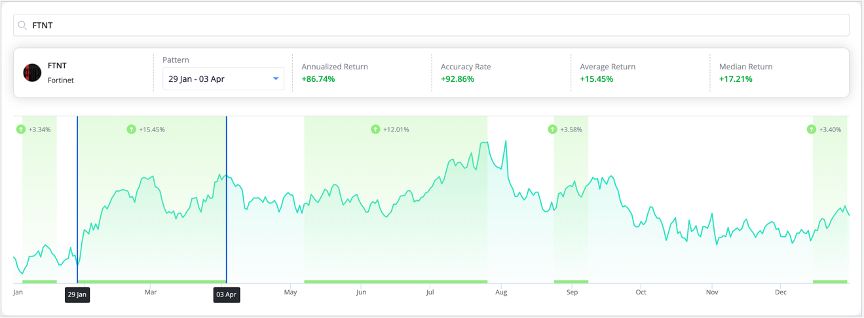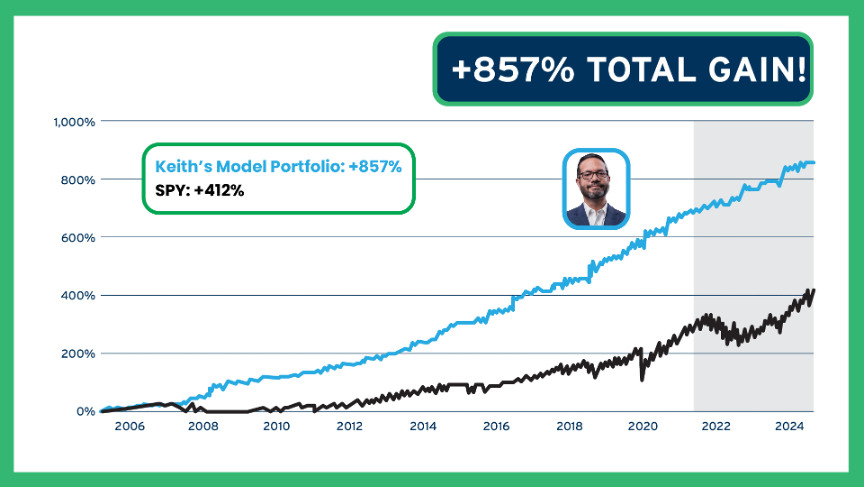The Best Day of the Year to Buy (and Sell) Any Stock
Doc's note: Whenever I recommend stocks to subscribers, I always provide the "why"... why it's a good investment now. But what if you could go even further and figure out the "when" as well?
Today, Keith Kaplan, CEO of our corporate affiliate TradeSmith, explains how to figure out the best times to buy and sell specific stocks to give yourself an even greater chance at gains...

A new year is here – and with a new year comes a new onslaught of unknowns. And unknowns are one of the most anxiety-inducing things for the market.
We saw it right before the election – the CBOE Volatility Index ("VIX") was soaring, investor sentiment was tentative at best, and we weren't sure if the Federal Reserve would surprise us (again).
But as soon as those unknowns disappeared, the market charged forward with a voracity we hadn't seen in months.
That's the power of knowledge to soothe that fear of the unknown.
And while there are some things about 2025 we won't know until we face them, at TradeSmith, we have recently made the biggest breakthrough in our history...
We have uncovered a way to solve one of the biggest unknowns in trading: the absolute best times of year to buy and sell any asset... all based on measurable, tangible patterns.
Let me show you how...
To the naked eye, stocks seem to trade erratically, whipping upward one day only to plummet the next – even after good news.
But there are stocks that trade so consistently... rising (or falling) sharply during specific windows of time, year after year... that you can map out an entire year of great trades – right now.
It's not unlike how farmers make their plans for the year. They don't know if it'll rain or snow next Wednesday, nor can they assume that every field they plant will produce a healthy crop.
But farmers do know when to plant for the best results, which (here in the Northern Hemisphere) is in the spring.
This is a dependable seasonal pattern in nature that humans have used to our advantage for thousands of years... without knowing the first thing about Earth's orbit.
With only a glance at their calendars, farmers get to work prepping and planting their fields from March to May, tending the crops from June to August, then harvesting in September to November, depending on the crop.
In fact, farmers behave this way so reliably that it creates a specific cycle in agricultural prices. Every year when it's time to harvest, there will be downward pressure on the price of those crops, since supply will at least temporarily be greater than demand.
Just as dependably, stocks go through seasonal cycles, too – and like farmers, you can know down to the very day when the best time is to buy or sell any given stock.
And with the new year right on our doorstep, a whole new slew of cycles is about to begin...
Start the Year Right
Take Netflix (NFLX), for example.
The popular streaming stock tends to climb dramatically starting in January. That's the first seasonal window highlighted here in green on our TradeSmith Seasonality chart:

But why is January to April such a great time for Netflix? Maybe it's the earnings report... although those have been a mixed bag the past few years. Or perhaps Netflix has been releasing hot new shows early in the year.
We can't always say why, and the why doesn't necessarily matter. Instead, we can simply recognize that the stock price has risen 19%, on average, between January 16 and April 5 during the past 15 years, and draw our own conclusions about Netflix.
Will it play out the same way in 2025? There are never any guarantees, but it is encouraging to know that this bullish seasonal pattern has a 93.3% track record of success.
Let's look at another example – cybersecurity giant Fortinet (FTNT).
Fortinet is also looking like a good buy in January. It tends to climb 3.3%, on average, from January 5 to January 20, then another 15.4% from January 29 to April 3, with an 80%-plus track record of gains during both these periods. In fact, the stock seems to be highly seasonal in how it trades, with several high-probability patterns playing out throughout the year...

Really, I could go on all day showing you different seasonal patterns in various stocks.
With a quick TradeSmith screener for seasonality, I was able to find 22 of them with a high-probability bullish pattern starting in January, averaging 10% to 20% gains in those first couple of months.
But I share this data just to show you how you can plan your trades on any stock... down to the day.
See, most people who recognize the power of seasonality can't get that specific about it. They can show you which sectors tend to perform best in the summer or the winter, sure, and they can attempt to explain why so you'll feel confident in their conclusion.
But typically stock pickers don't have the data or the firepower to crunch all the different numbers and say: For any particular stock, what is the best day of the year to buy... then sell?
Even when you can plot out a whole year's worth of seasonality, as we do at TradeSmith, some days are still far better than others. We highlight those days for you as the green zones you saw on my charts here today.
And I don't mind telling you that this could be the biggest breakthrough we've ever had at TradeSmith.
This can allow us to recommend trades in 2025 more confidently than ever before – because we know which stocks will offer us high-probability trades months ahead of time.
But I am only interested in bringing you a trading strategy that could win at least 80% of the time. And when we back tested our seasonality system with all sorts of different criteria, we actually discovered that the simplest strategy was the most effective...
We narrowed it down to a two-step process for selecting these trades. And in our 18-year back test, we had a positive average return every year: 5.96% overall, with an average hold time of 19 days.
Keep racking up those wins frequently throughout the year and you could see a 118% annualized return.
Even the worst year in our back test – 2007 – saw an average trade of 2.5% and an annualized return of 37.9%. Far better than the S&P 500 Index will earn you in any year (but especially in 2007!).
And overall, testing this strategy over 18 years showed 857% growth – more than twice what the S&P 500 – as measured by the SPDR S&P 500 Fund (SPY) – delivered over the same period:

On Wednesday, January 8, at 10 a.m. Eastern time, I'll show you everything I can about this strategy and how we will use it to find you the most reliable stocks to trade in 2025... on their very best days of the year.
All the best,
Keith Kaplan